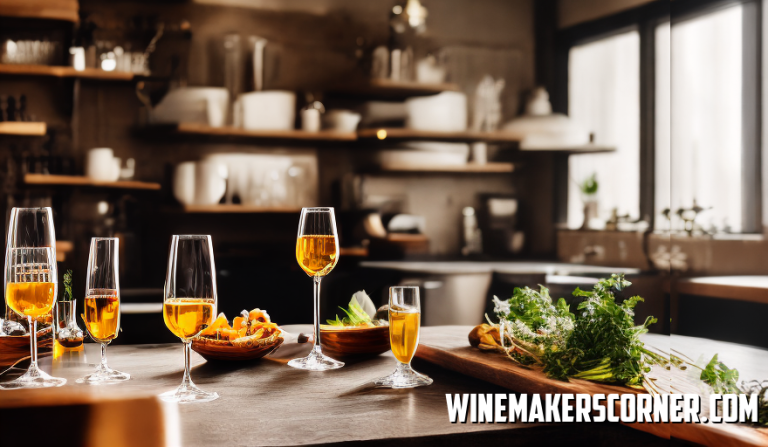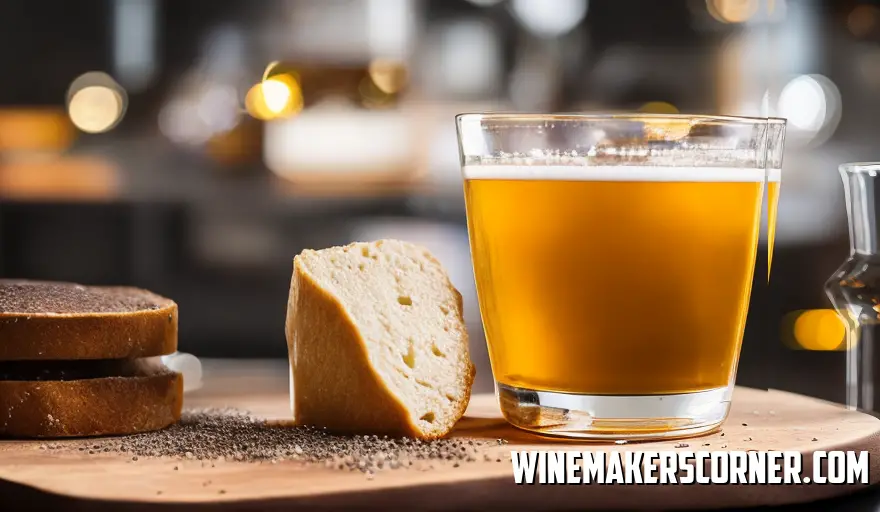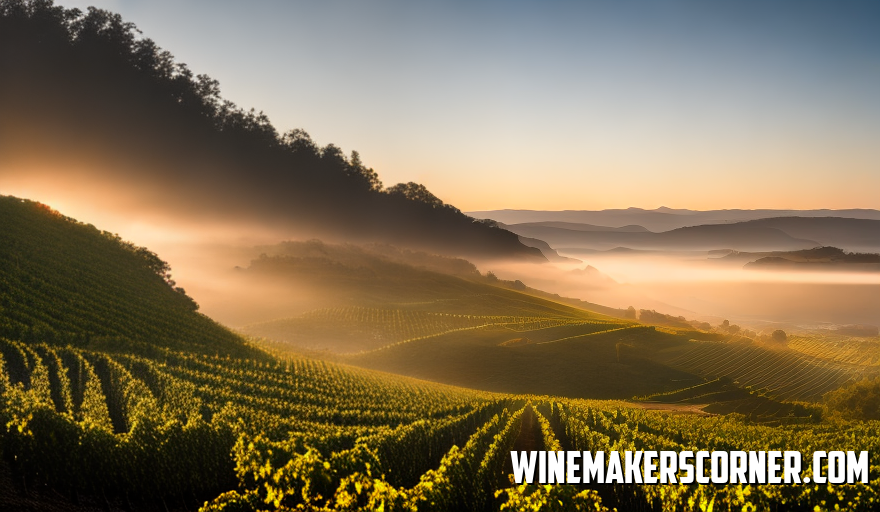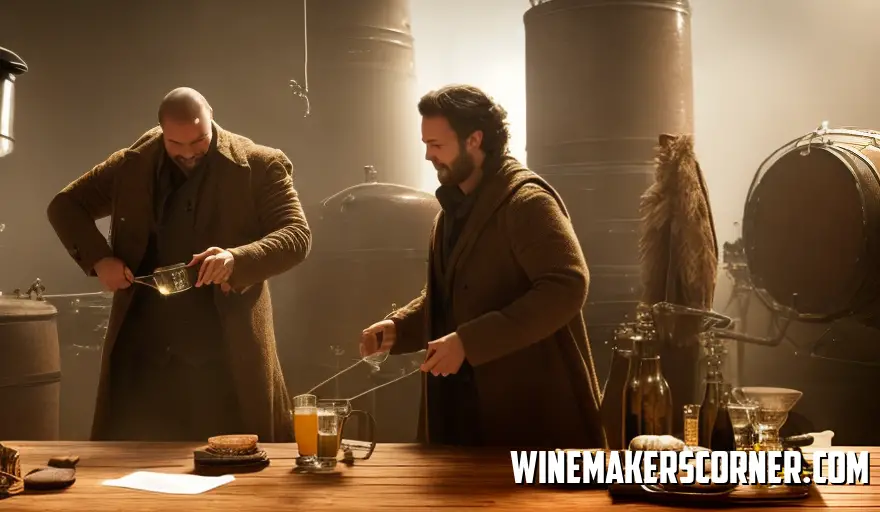Ah winemaking – what a delightful pursuit! It marries time honored traditions with cutting edge techniques transforming humble grapes into exquisite works of art that thrill both novice sippers and connoisseurs alike. But as any aspiring winemaker knows well balancing potency with flavor complexity is no easy feat. If you’re eager to create your own homemade elixirs and produce stronger wines without sacrificing their unique profiles – don’t worry! Our treasure trove of tips and tricks awaits you here today – offering no shortage of advice to guide you through the maze of options ahead. So lets raise those glasses high and dig in!
Selecting the Right Grapes
The process of crafting strong homemade wine that appeals to all tastes heavily relies on the type of grape you select. Not every grape possesses the same qualities; each one has characteristics unique from others in terms of affecting taste, aroma, and potency levels. In this discussion we will put emphasis on the critical elements needed to consider when choosing grapes for winemaking purposes.
To start with you should understand that grape variety dictates the flavor profile and strength of your homemade wine. Each kind offers a distinct character regarding flavor and strength characteristics. If you are looking for potent wines with high alcohol content levels select grape varieties such as Zinfandel or Petite Sirah known for having high sugar content levels. Ripeness level is another crucial aspect worth considering when evaluating grapes’ suitability for winemaking purposes since they have a significant influence on sugar levels determining higher alcohol content in finished wines.
Timing harvest time is vital because overripe grapes tend to lose acidity while underripe ones generally lack sufficient sugar levels required for successful wine production
Terroir is another factor that plays a vital role in determining your selected grapes’ potency level when it comes to producing quality homemade wines environment factors including soil quality, climate conditions where grown along with sunlight exposure correlations all impact the finished products’ final profile attributes. Lastly: optimal post harvest handling measures guard against damage affecting fruit quality while ensuring prime fermentation steps later done during winemaking process commences optimally.
Summarizing what we’ve gone over: selecting potent grape varieties relies on various methods involving carefully scrutinizing diversity factors like varietal selection processes involving ripeness considerations alongside terroirs importance aspects understanding while focusing on proper post harvest handling practices utilized by every vintner creating outstanding wines at home! Taking into account all factors significantly enhances making homemade wine that is both robust and flavorful with uniqueness sure to please even the most discriminating palates.
Optimal Fermentation Techniques
Creating potent homemade vino requires much attention to optimal fermentation techniques. This process plays a pivotal role in determining the final products strength and quality. As such it’s crucial to delve into these techniques which guarantee success when brewing wine at home.
Selecting high alcohol tolerant yeast strains like EC 1118 and K1 V1116 ensures that your wine can withstand higher sugar levels resulting in more powerful wines while maintaining temperature between 68 75°F (20 24°C) promotes effective yeast growth during oxygenation via daily stirring of the must.
Providing essential nutrients like diammonium phosphate (DAP) or Fermaid K nourishes yeast cells during robust fermentations monitored by using a hydrometer consistently as it tracks specific gravity indicating sugar content and hints at alcohol levels.
Finally taking ample time before condensing down to aging and bottling stages guarantees complete fermentations leading to excellent quality results. In summation choosing ideal wine making methods including selecting proper high alcohol tolerant yeasts strains controlling temperature properly maintaining adequate oxygenation promoting optimum nutrition with diammonium phosphate or Fermaid K keeping track of specific gravity using a hydrometers consistently practicing patience all contribute to creating potent homemade wine.
Yeast Selection for High Alcohol Wines
Crafting high-alcohol wines is heavily reliant on the selection of yeast. Not all yeast strains are created equal and some are better suited for producing potent vino. Choosing the right yeast is essential for wine potency making it crucial for high alcohol wine lovers to consider using Saccharomyces cerevisiae strains known for their alcohol tolerance.
These yeasts can withstand up to 18% alcohol by volume (ABV) making them perfect for creating bold and robust wines that pack a punch. During fermentation temperature control is paramount as some yeast strains thrive in warmer conditions while others prefer cooler environments. Researching optimal temperature ranges based on your chosen strain is key.
Proper maintenance of suitable temperature throughout fermentation will ensure optimal results.
Its also important to note that yeast nutrient concentration plays a crucial role in determining alcohol content. A well nourished yeast population will ferment more efficiently and yield higher ABV levels so quality nutrient sources like diammonium phosphate (DAP) or specialized blends available on the market should be used. In addition sugar content should not be overlooked as higher sugar levels correlate with increased potential alcohol content since yeast ferments sugar into alcohol and carbon dioxide.
Therefore its recommended to choose grape varieties with elevated sugar concentrations or consider adding extra sugars to achieve desired potency levels. To conclude selecting a suitable yeast strain is vital when crafting stronger homemade wines as factors such as temperature preferences and nutrient requirements play a critical role in their production. With careful attention to detail and proper planning you’ll surely impress even the most discerning palates!
Wine Aging and Storage Tips
Wine enthusiasts worldwide are captivated by the process of aging for it can transform basic grape juice into a complex and nuanced beverage with varied flavors that so often tempts them! As wine lovers, the goal is to craft stronger homemade vino, optimize potential, and enhance its potency through proper aging & storage techniques.
To age wine correctly, several factors contribute to its development over time. However, oxygen exposure is one critical element that can aid or harm your wine’s maturity level. Hence it would help if you always monitored ullage – the space between cork and wine – which helps control oxygen levels by indicating evaporation rates.
Consistent temperature maintenance plays a crucial role in better preserving homemade vino’s quality while undergoing the aging process.
Thus a range of 55-60°F (13-16°C) would be desirable for optimal results. Any deviation from this could result in premature spoilage or aging.
Humidity is another significant factor when storing homemade wines; ideally ensuring relative humidity levels of 60-75%, preventing cork shrinkage; hence avoiding unwanted oxidation or contamination.
Storing wines should always take place in dark environments to prevent harmful UV rays from infiltrating bottles leading to changes in taste or reducing longevity due to external chemical reactions or interactions with UV light.
Keeping bottles horizontal during storage is ideal as it keeps corks moistened while ensuring an airtight seal prevents excessive oxygen entry leading to early maturation processes resulting in a weaker outcome than desired.
Storage methods often overlook vibrations’ impact affecting sediments’ formation during natural maturation leading to smooth textures ad flavor contributions vital for optimal outcomes when enjoying well-aged wines!
In conclusion: Crafting stronger home-made vino via optimal aging & storage technique requires consistency while closely monitoring conditions throughout the process. Patience indeed becomes rewarding by bringing forth potent flavors contributing towards fantastic palate delights globally enjoyed!
Balancing Flavor and Strength
Crafting robust homemade wine requires skillful blending of flavors with strength resulting from meticulous management of grapes’ nuances alongside intricate expertise spanning fermentations processes through aging techniques – all combined hold defining feats for exquisite vino-making. So let’s unpack these crucial elements to help you bring out the perfect balance!
Indeed, selecting the right grape is primordial; some bear high sugar levels that implicate increased alcohol content following yeast fermentation. Thus, choosing grape varieties such as Zinfandel or Petit Sirah known for their bold flavors and hi-alcohol content potential.
Fermentation plays a vital role in determining wine potency, hence carefully selecting yeast strains becomes critical – choose one that matches personal preferences contributing to desirable quality outcomes. Yeast strains with higher alcohol tolerance can withstand elevated levels of ethanol without compromising complexity in flavor’s depth necessary for crafting great wines!
In addition, temperature control during fermentation is also a central aspect to be wary of; higher temperatures may speed up fermentation but produce unwanted debasing flavors while cooler temperatures preserve fruity ester features but may not always hit target-proof points for maximum results.
Sugar management must not be ignored along vino-making processes since overdoing it can lead to an overly sweet or unbalanced wine.
Therefore, chaptalization involves adding extra sugar during fermentation to support the achievement of desired alcohol content levels – use judiciously.
Finally, aging drastically affects flavor and strength development—patience is quintessential! A well-aged bottle develops depth with character while simultaneously softening its harshness from higher alcohol content. Experiment with oak barrels or oak chips to enhance complexity!
In conclusion, producing robust homemade wine demands balancing numerous factors: grape selection, yeast strain selection, temperature control during fermentations process and monitoring sugar management – all culminate into achieving a preferential balance between flavor and strength while unlocking winemaking mystery… Happy Winemaking!
Monitoring Sugar Content
Winemaking is an art that requires keen attention to detail, especially when choosing ingredients and implementing processes such as fermentation. Sugar levels in grapes forms a fundamental aspect of quality as natural winemakers seek ways to enhance alcohol content and flavor without eroding other taste profiles.
Factors such as soil, climate, and varietal dynamics play vital roles in determining sugar levels in fruit juices that ultimately guide the decision-making process for more robust wines. Using modern technology like a refractometer helps measure actual concentrations throughout fermentation stages essential to achieving intended potency goals.
Chaptalization or fortification involve methodologies one may use as additional steps beyond selecting ripe grapes to boost wine’s overall strength while enhancing unique flavors and characteristics inherent to particular fortified wines – like Port, Sherry or Madeira.
With diligence, careful attention to details alongside cutting-edge instruments, crafting potent homemade vino may not only tempt your palates but also soothe your senses!
Managing Tannins and Acids
Crafting a strong & palatable homemade wine requires skillful management of tannins & acids as they significantly influence potency, aging potential & flavor profiles within your vino. Understanding tassels found within grape skins seeds stems provides depth, complexity and astringency ensuring robust flavor profiles are developed in home winemaking processes. Grape varieties like Cabernet Sauvignon or Nebbiolo provide high tannin concentrations; oak barrels can be added during fermentation for an enhanced taste experience.
Balancing acidity is crucial for preserving freshness while influencing taste perception in wines further indicating how essential proper acid balance is in home winemaking. Selecting highly acidic grape varieties like Riesling or Sauvignon Blanc sets your raw ingredients off on the right foot allowing natural acids to be preserved during harvesting if appropriate to maintain fresh flavors at peak intensity over time. In conclusion managing tassel and acid content within your winemaking process ensures the right balance needed for top quality results which great tasting homemade vino can provide. Experimenting with various techniques leads to finding the perfect balance needed for robust yet drinkable wine. Whether choosing grape varieties wisely optimizing maceration periods utilizing oak aging senses or thoughtful acid adjustments when necessary just a few touches can turn ordinary homemade wines into an extraordinary experience for all to enjoy!
Enhancing Your Wine with Fortification
Fortification is a well known winemaking technique used by many winemakers throughout the centuries known for enhancing the potency of their wine using high alcohol spirits such as brandy or grape based alcohol. If you’re aspiring to make homemade vino like an expert using this age old practice – lets underpin necessary details:
The essential part involves adding fortifying agents into fermenting wines during mid fermentation stages which stops fermentation while increasing its overall alcohol content providing robust flavors expected from fortified wines. Your choices of agents determine your wines flavor profile with brandy remaining a top candidate while others like grappa or even vodka providing unique twists on classic recipes. Its crucial to add these spirits at the right time as quantity and proper timing play a vital role in the fortification process.
Excessive amounts too early during the fermentation stage might interrupt or compromise fermenting flavors while waiting too long can lead to an overly sweet final product due to unfermented grapes’ residual sugar. Lastly fortified wines offer endless possibilities for creative expression by experimenting with various blending and aging techniques resulting in that memorable libation- perfect for sharing at any special event! In summary: Boosting wine potency is achievable through this age old method that winemakers have been using for centuries if implemented correctly – by understanding the process cautiously selecting appropriate spirits adding them at a timely manner while experimenting with different blends and aging techniques leading to remarkable wine every time!




